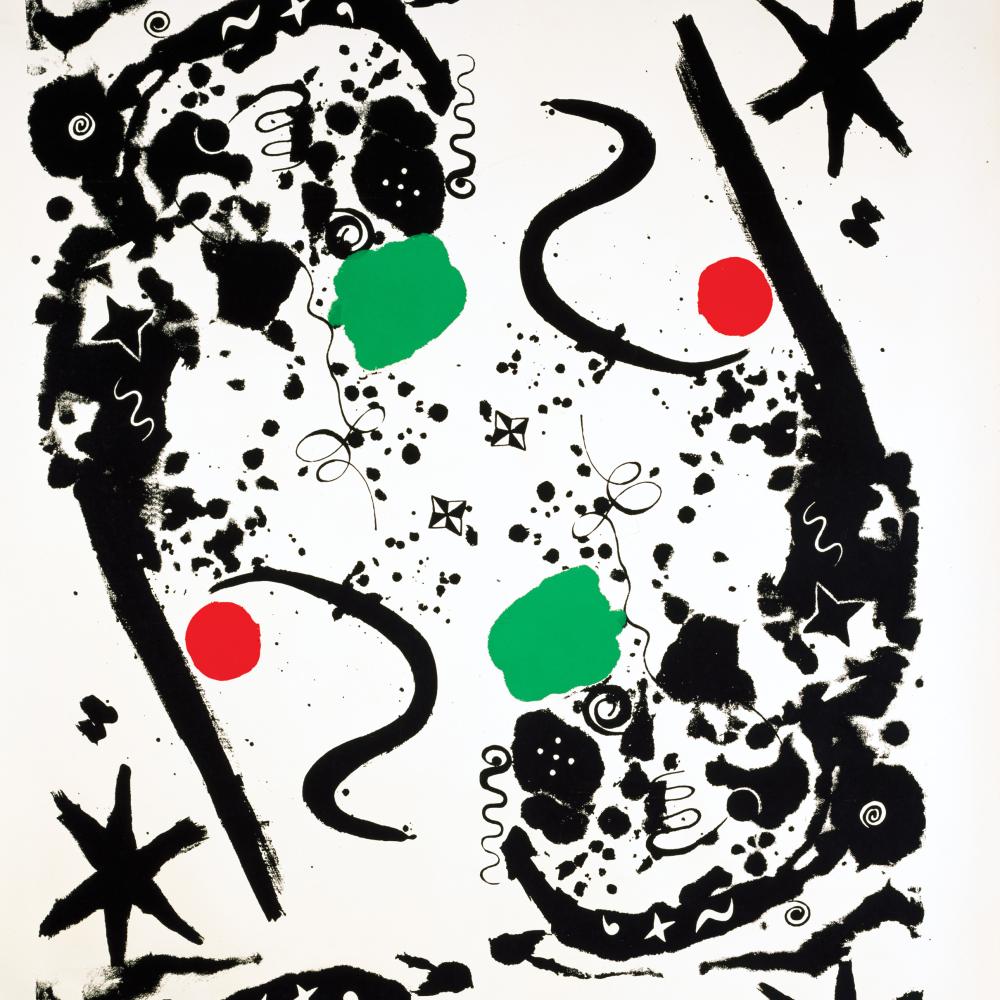Alexander Calder produced this spirited composition with the fitting title Splotchy in 1949. Commissioned by interior designers Erwine and Estelle Laverne, Splotchy was one of two motifs the artist made for Laverne furniture textiles and wallpaper panels.
Though wallpaper has faded in popularity in recent decades, it was a fixture of interior design in North America for much of the past three centuries. Invented in ancient China, wallpaper spread to Europe in the fifteenth century through the use of “dominos,” small sheets of printed paper pasted on walls or used to adorn tucked-away spaces such as drawer interiors. By the seventeenth century, thanks to advances in printing technology, the first rolls of wallpaper were manufactured. Another century later, further improvements to the printing process allowed for the mass production and sale of elaborately designed, multicolored wallpapers.
Supplementing or replacing tapestries, wall hangings, and paintings, wallpaper provided working- and middle-class buyers with a practical and affordable means of customizing their homes. With Splotchy, it was possible for the average consumer to boast that they had a Calder in their dining room or kitchen.
Explore the intricacy and diversity of more than 400 digitized wallpaper samples in the Rhode Island School of Design (RISD) Museum’s wallpaper collection, whose conservation is supported by a 2021 NEH preservation grant.


